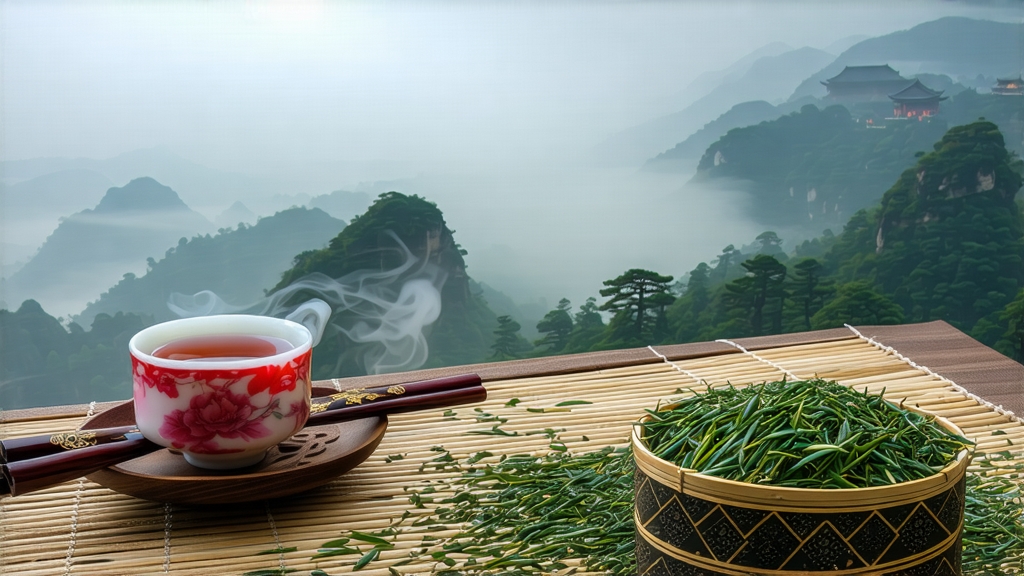
Long before English breakfast blends and afternoon tea services, there was Lapsang Souchong—an assertive, smoke-kissed black tea that sailed out of the Min River estuary in the early seventeenth century and rewrote the global palate. Western merchants first recorded it as “bohea,” a corruption of the Fujianese place-name Wuyi, and for two hundred years European courts measured their sophistication by how much of this mysterious leaf they could secure. Today, connoisseurs still regard Lapsang Souchong as the primogenitor of all black teas, not merely because it was the earliest to be fully oxidized, but because its singular production method—pinewood smoke—continues to divide purists from adventurers.
The tea hails from Tongmu Guan, a protected enclave inside the Wuyi Mountain UNESCO heritage site where the altitude climbs abruptly from 600 to 1 800 meters, trapping cool mists that slow leaf growth and concentrate amino acids. Only six administrative villages are authorized to produce authentic Lapsang; outside that radius, even identical cultivars and smoke cannot legally bear the name. Two predominant sub-varieties survive. The first, “Original Pine Smoke,” is crafted from the petite spring budset of the Xiao Zhong (small-leaf) cultivar; the second, “Wuyi Smoky Zheng Shan,” employs the broader Da Bai Hao bush and is finished with a lighter, cooler smoke to appease modern palates. Between them lies a stylistic spectrum that ranges from campfire swagger to whispered incense.
Plucking begins on Qingming festival, when the standard becomes “one bud, two leaves, still folded like a sparrow’s tongue.” The morning harvest is rushed to the village’s sole dirt-floored smokehouse, a Qing-dynasty structure whose rafters are blackened by decades of resin. There, leaves are first withered over embers of local Masson pine; the heat is gentle enough to dehydrate without fixing the green character, while resins volatilize into phenols that will later bond with the leaf’s own terpenes. Once the leaf loses sixty percent of its moisture—judged by the audible “crinkle” when twisted between forefinger and thumb—it is rolled for forty minutes on bamboo trays. Rolling ruptures cells, initiating oxidation that darkens the leaf from jade to copper within two hours. The crucial divergence from orthodox black-tea protocol occurs next: instead of being baked in electric ovens, the oxidized leaf is spread on hemp cloth above smoldering pine logs and left to absorb smoke for six to eight hours. Master smokers adjust dampers every twenty minutes, ensuring the temperature never exceeds 80 °C; too hot and the leaf will bake, too cool and the smoke clings unevenly. Finally, the tea is given a “charcoal finish,” a twenty-minute rest above glowing lychee-wood coals that drives residual moisture down to 3 % and adds a subtle sweetness to balance the tar.
The resulting leaf is glossy, almost obsidian, with golden tips flashing like flecks of mica. Aroma straight from the tin can shock the uninitiated: resinous, phenolic, reminiscent of a winter hearth. Yet once brewed, the smoke softens into a complex triad of longan, dried fig, and pine honey, anchored by a minerality imparted by Wuyi’s weathered granite soils.
To unlock that metamorphosis, water must be mountain-soft and just off a rolling boil, 95 °C. Gongfu purists favor a porcelain gaiwan of 120 ml, 5 g of leaf, and an initial flash rinse to awaken the aromatics. The first proper infusion, fifteen seconds, yields a liquor the color of stained cherry wood; raise the cup to the light and a reddish-gold halo appears at the meniscus. Sip noisily, aerating the tea across the palate: front notes of smoked lychee, mid-palate cocoa, finish of cooling camphor that lingers like a cedar wardrobe. Subsequent infusions—twenty, thirty, forty seconds—reveal a progressive mellowing; by the fifth steep the smoke recedes, exposing a naked brown-sugar sweetness that surprises newcomers who expected nothing but barbecue. Western-style brewing can also succeed: 3 g per 250 ml mug, three minutes, produces a rounder, malt-forward cup, though the smoke will dominate more than in gongfu service.
Pairing food